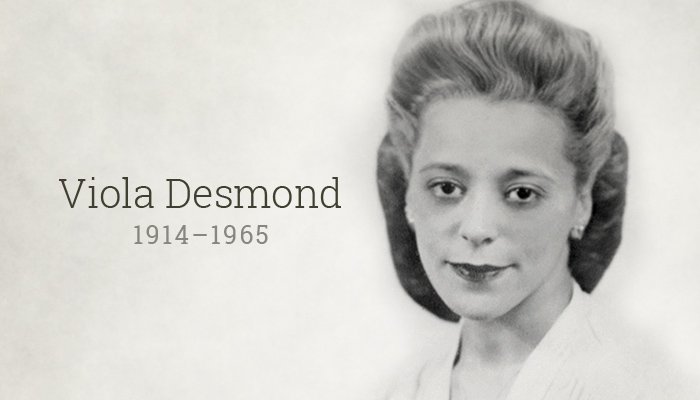A Face to Remember
Viola Desmond and Her Lasting Role in Canada’s Civil Rights Movement
Some people make history in their lifetime. Others, like Viola Desmond, continue making headlines long after they are gone.
In 1946, Desmond found herself at the center of a fight against racial segregation in New Glasgow, Nova Scotia. That year, she entered a local movie theatre and sat on the main floor—seating unofficially reserved for white patrons. Black customers were expected to sit in the balcony. When she refused to move, theatre staff called the police. She was dragged from her seat, jailed overnight, and charged—not with breaking segregation laws, but with failing to pay a one-cent tax difference between balcony and main floor tickets.
What seemed at first to be a small incident soon grew into something much larger. Newspapers across Nova Scotia covered the story, and Desmond’s case became one of the earliest and most significant challenges to racial segregation in Canada. Although her appeals through the court system met roadblocks, her defiance helped spark conversations that would fuel Canada’s civil rights movement. It wasn’t until 2010, more than 40 years after her death, that she was officially pardoned—the first posthumous pardon ever granted in Canada.
Breaking Barriers in Business
Viola Desmond’s courage wasn’t limited to the theatre. She was also a visionary entrepreneur and educator who opened doors for Black women in business.
Determined to build a career as a beautician, she enrolled at the Field Beauty Culture School in Montreal, one of the few institutions in Canada that welcomed Black students at the time. With her training complete, she opened her own beauty salon. In 1940s Nova Scotia, beauty parlours were more than places for styling—they were community hubs where women gathered, shared ideas, and built connections.
Recognizing both the need and the opportunity, Desmond went a step further and founded the Desmond School of Beauty Culture. The school became a beacon for Black women who had been shut out of other institutions, graduating as many as 15 students a year. In doing so, Desmond not only created jobs but also fostered independence, confidence, and leadership among women who would carry her influence into communities across the province.
By the time segregation was legally abolished in Nova Scotia in 1954, Viola had already seen the impact of her work ripple outward. She lived to witness change that she helped to inspire.
Recognition Long Overdue
It took decades for Canada to officially recognize Viola Desmond’s courage. In 2010, the Nova Scotia government issued a formal apology and posthumously pardoned her for the New Glasgow theatre incident. That gesture was more than symbolic—it acknowledged the injustice she endured and reaffirmed the province’s commitment to human rights.
Since then, honours have continued to mount. Canada Post issued a commemorative stamp in her image in 2012. Nova Scotia created a provincial holiday—Heritage Day—in her honour in 2015. In 2016, she became the first woman of colour featured in a Canadian Heritage Minute. And in 2018, her legacy reached millions of Canadians daily when she became the face of the new ten-dollar bill—the first Canadian woman ever to be featured on a regularly circulating banknote.
A Lasting Legacy
Viola Desmond’s story began with a single act of defiance in a small-town movie theatre. But her influence stretched far beyond that moment. She was a businesswoman, a mentor, and an advocate who inspired others to challenge injustice and believe in their potential.
Today, her face on Canada’s currency serves as a reminder of the progress she fought for—and of the work that still remains. Viola Desmond is more than a historical figure; she is a lasting symbol of resilience, empowerment, and justice.
A face to remember, indeed.



